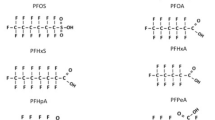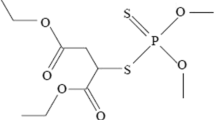Abstract
When rats were dosed with 14 μg/kg 3H-isoproterenol, 3H-radioactivity was measurable in the liver until 48 h. This amount was not different in livers of animals which have been pretreated with diethyl maleate.
After exhaustive extraction, a significant amount of 3H-radioactivity from isoproterenol could be detected in the proteins of total liver (homogenate), of cytosol and of microsomes. In the cytosol fraction of diethyl maleate pretreated animals twice the amount of isoproterenol-radioactivity was found in the extracted proteins compared to controls. In the microsomal fraction there was no difference between diethyl maleate pretreated and control animals in the amount of radioactivity incorporated into proteins.
In all fractions the radioactivity measurable in the extracted proteins declined with a half life time of about 24 h.
The in vivo results on covalent binding of isoproterenol are compared to the irreversible protein binding of ethinyloestradiol in vivo. Quantitatively, these in vivo data are compared to the results on irreversible protein binding obtained during incubations of isoproterenol or ethinyloestradiol with rat liver microsomes.
Zusammenfassung
Wenn Ratten mit 14 μg/kg 3H-Isoproterenol behandelt wurden, konnte bis 48 h danach in der Leber 3H-Radioaktivität gemessen werden. Diese Menge war nicht unterschiedlich in Lebern von Tieren, welche mit Diäthylmaleat vorbehandelt waren. Nach erschöpfender Extraktion konnte eine beträchtliche Menge an 3H-Radioaktivität aus Isoproterenol in den Proteinen von Gesamtleber (Homogenat), Cytosol und von Mikrosomen gefunden werden. In der Cytosolfraktion von Diäthylmaleat vorbehandelten Tieren wurde die zweifache Menge von Isoproterenol-Radioaktivität in den extrahierten Proteinen gefunden, im Vergleich zu Kontrollen. In der mikrosomalen Fraktion gab es keinen Unterschied bei der Radioaktivitätsmenge, die in Proteine eingebaut war.
In allen Fraktionen nahm die Radioaktivität, die in den extrahierten Proteinen meßbar war, mit einer Halbwertszeit von etwa 24 h ab.
Die in vivo-Ergebnisse über kovalente Proteinbindung von Isoproterenol werden verglichen mit der irreversiblen Proteinbindung von Äthinylöstradiol in vivo. Quantitativ werden diese in vivo-Befunde mit den Resultaten zur irreversiblen Proteinbindung verglichen, die während Inkubationen von Isoproterenol oder Äthinylöstradiol mit Rattenlebermikrosomen erhalten wurden.
Similar content being viewed by others
References
Ball, P., Gelbke, H. P., Haupt, O., Knuppen, R.: Metabolism of 17α-ethynyl-[4-14C]oestradiol and [4-14C]mestranol in rat liver slices and interaction between 17α-ethynyl-2-hydroxyoestradiol and adrenalin. Hoppe-Seylers Z. physiol. Chem. 354, 1567–1575 (1973)
Ball, P., Farthmann, E., Knuppen, R.: Comparative studies on the metabolism of oestradiol-17β and 2-hydroxy-oestradiol-17β in man in vitro and in vivo. J. Steroid Biochem. 7, 139–143 (1976)
Bolt, H. M.: Structural modifications in contraceptive steroids altering their metabolism and toxicity. Arch. Toxicol. 39, 13–19 (1977)
Bolt, H. M., Kappus, H.: Irreversible binding of ethynyl-estradiol metabolites to protein and nucleic acids as catalyzed by rat liver microsomes and mushroom tyrosinase. J. Steroid Biochem. 5, 179–184 (1974)
Bolt, H. M., Kappus, H., Remmer, H.: Studies on the metabolism of ethynyl-estradiol in vitro and in vivo: The significance of 2-hydroxylation and the formation of polar products. Xenobiotica 3, 773–785 (1973)
Bolt, H. M., Kappus, H., Käsbohrer, R.: Metabolism of 17α-ethinylestradiol by human liver microsomes in vitro: Aromatic hydroxylation and irreversible protein binding of metabolites. J. clin. Endocr. 39, 1072–1080 (1974)
Bolt, H. M., Kappus, H.: Interaction by 2-hydroxyestrogens with enzymes of drug metabolism. J. Steroid Biochem. 7, 311–313 (1976)
Bors, W., Saran, M., Lengfelder, E., Spöttl, R., Michel, C.: The relevance of the superoxide anion radical in biological systems. Curr. Top. Radiat. Res. Quart. 9, 247–309 (1974)
Dybing, E.: Organ and species differences in microsomal activation of methyldopa. Drug Metab. Dispos. 4, 513–516 (1976)
Dybing, E., Nelson, D., Mitchell, J. R., Sasame, H. A., Gillette, J. R.: Oxidation of α-methyldopa and other catechols by cytochrome P-450-generated superoxide anion: Possible mechanism of methyldopa hepatitis. Molec. Pharmacol. 12, 911–920 (1976)
Fishman, J., Guzik, H., Hellman, L.: Aromatic ring hydroxylation of estradiol in man. Biochemistry 9, 1593–1598 (1970)
Fishman, J., Yoshizawa, I., Hellman, L.: Mechanism of catechol estrogen formation in man. Steroids 22, 401–411 (1973)
Hoppen, H.-O., Siekmann, L., Breuer, H.: Stoffwechsel von Östron in der Mikrosomenfraktion der Rattenleber. Hoppe-Seylers Z. physiol. Chem. 355, 1305–1315 (1974)
Kappus, H.: Irreversible protein binding of 14C-imipramine in rats in vivo. Arch. Toxicol. 37, 75–80 (1976)
Kappus, H., Remmer, H.: Irreversible protein binding of 14C-imipramine with rat and human liver microsomes. Biochem. Pharmacol. 24, 1079–1084 (1975a)
Kappus, H., Remmer, H.: Metabolic activation of norethisterone (norethindrone) to an irreversibly protein-bound derivative by rat liver microsomes. Drug Metab. Dispos. 3, 338–344 (1975b)
Kappus, H., Bolt, H. M., Remmer, H.: Irreversible protein binding of metabolites of ethynylestradiol in vivo and in vitro. Steroids 22, 203–225 (1973)
Kuss, E.: Mikrosomale Oxidation des Östradiols-17β. Hoppe-Seylers Z. physiol. Chem. 352, 817–836 (1971)
Maddrey, W. C., Boitnott, J. K.: Severe hepatitis from methyldopa. Gastroenterology 68, 351–360 (1975)
Marks, F., Hecker, E.: Beziehungen zwischen Östrogenstoffwechsel und Lipidperoxydation in Rattenlebermikrosomen. Hoppe-Seylers Z. physiol. Chem. 349, 523–532 (1968)
Marks, F., Hecker, E.: Metabolism and mechanism of action of oestrogens. XII. Structure and mechanism of formation of water-soluble and protein-bound metabolites of oestrone in rat-liver microsomes in vitro and in vivo. Biochim. biophys. Acta (Amst.) 187, 250–265 (1969a)
Marks, F., Hecker, E.: Stoffwechsel und Wirkungsmechanismus der Östrogene. XI. Stoffwechsel von [4-14C]2-Hydroxy-östron in Rattenlebermikrosomen. Hoppe-Seylers Z. physiol. Chem. 350, 69–84 (1969b)
Miller, R. W., Rapp, U.: The oxidation of catechols by reduced flavins and dehydrogenases. An electron spin resonance study of the kinetics and initial products of oxidation. J. biol. Chem. 248, 6084–6090 (1973)
Misra, H. P., Fridovich, I.: The role of superoxide anion in the autoxidation of epinephrine and a simple assay for superoxide dismutase. J. biol. Chem. 247, 3170–3175 (1972)
Nelson, S. D., Mitchell, J. R., Dybing, E., Sasame, H. A.: Cytochrome P-450-mediated oxidation of 2-hydroxyestrogens to reactive intermediates. Biochem. biophys. Res. Commun. 70, 1157–1165 (1976)
Rehman, O. U., Keith, T. A., Gall, E. A.: Methyldopa-induced submassive hepatic necrosis. J. Amer. med. Ass. 224, 1390–1392 (1973)
Remmer, H., Greim, H., Schenkman, J. B., Estabrook, R. W.: Methods for the elevation of hepatic microsomal mixed function oxidase levels and cytochrome P-450. Meth. Enzymol. 10, 703–708 (1967)
Scheulen, M., Wollenberg, P., Bolt, H. M., Kappus, H., Remmer, H.: Irreversible binding of dopa and dopamine metabolites to protein by rat liver microsomes. Biochem. biophys. Res. Commun. 66, 1396–1400 (1975)
Scheulen, M., Kappus, H., Bolt, H. M.: Microsomal oxidation of isoproterenol and irreversible protein binding of metabolites. In: “Microsomes and Drug Oxidations” (V. Ullrich, J. Roots, A. Hildebrandt, R. W. Estabrock and A. H. Conney, eds.), p. 661–666. Oxford, New York: Pergamon Press 1977
Wollenberg, P., Scheulen, M., Bolt, H. M., Kappus, H., Remmer, H.: Wirkung von 2-Hydroxyostradiol-17β auf den NADPH-abhängigen Elektronentransport in Rattenleber-Mikrosomen in vitro. Hoppe-Seylers Z. physiol. Chem. 357, 351–357 (1976)
Author information
Authors and Affiliations
Rights and permissions
About this article
Cite this article
Remmer, H., Scheulen, M., Kappus, H. et al. The significance of covalent binding of catechols to proteins in vivo. Arch. Toxicol. 39, 31–39 (1977). https://doi.org/10.1007/BF00343273
Received:
Issue Date:
DOI: https://doi.org/10.1007/BF00343273




